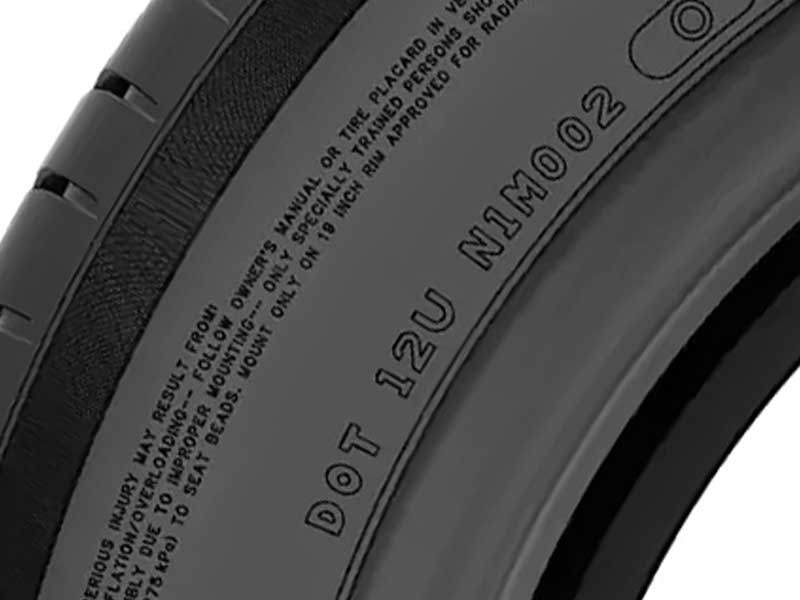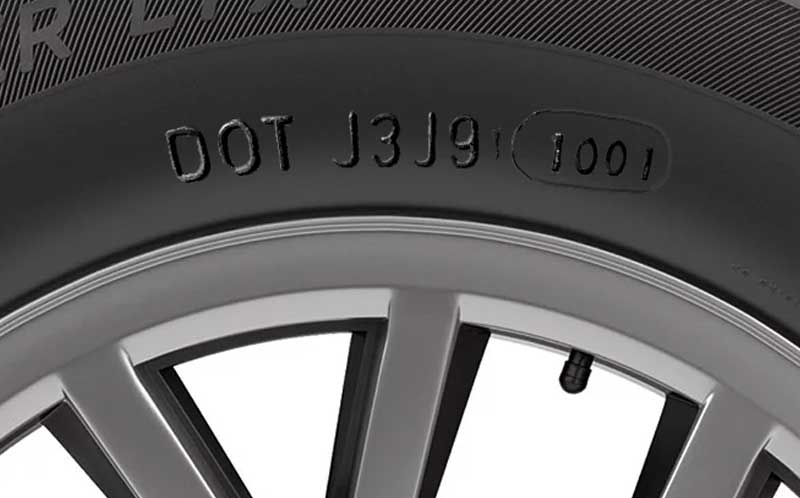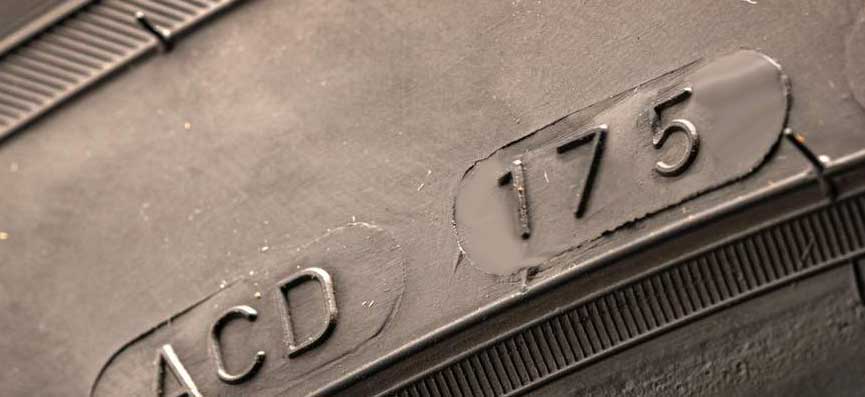When it comes to identifying the age of a tire, it is simple to do so by checking its Tire Identification Number. Tire Identification Numbers are really batch identifiers that indicate the week and year the tire was manufactured.
The Tire Date Code is located on the sidewall of your tire and is part of a sequence of digits known as the DOT Code, also called Tire Identification Number (TIN).

Tire Date Code is useful for confirming the date of production of your tires, registering new tires with the manufacturer, and perhaps identifying the tire in the event of a product recall.
The primary reason for the DOT code is automobile safety.
For example, the code promotes safety by allowing sales to be tracked. In the case of a tire recall, this information is utilized to target tire owners.
Table of Contents
Where to find Date Code of Tire?
To find the DOT Code, examine all the tire’s sides.
There are several numbers and letters.
Find the number that begins with the letter DOT and is followed by the ten to twelve series code.
The Department of Transportation’s initials (DOT) will be followed by a code on the sidewall of your tire.
You may find the information you need to you will be able to determine the tire size, year, and location of manufacture.
Reading the DOT code
Over the past three decades, the DOT code has altered, allowing the system to advance, and become simpler to understand for both customers and businesses.
They are classified in to two further categories:-
- Tires Manufactured in 2000 & After
- Tires Manufactured before 2000
Tires Manufactured in 2000 & After
The DOT code for the tires manufactured in 2000 or after begins with three letters: DOT.
These letters are followed by two alphanumeric symbols representing the Plant code, or the location of the tire’s production.
The last four numerals denote the manufacturing week and year.

For example, in this tire having code DOT J3J9 1001, the last four numbers give the information of manufacturing week and year.
Fist two numbers indicate the week number, and last two numbers indicate the year.
This tire was manufactured in 10th week of 2001.
DOT J3J9 1001 = 10 indicate the week number
DOT J3J9 1001 = 01 indicate the year.
Tires Manufactured Before 2000
For tires made before 2000, the Tire Identification Number was created with the presumption that they wouldn’t be used for 10 years.
The week and year the tire was created were contained in the final three numbers, but they were still obliged to offer the same information as today’s tires.
In the 1980s, the three-digit number signified both the week of manufacture and the year made within the decade.
For example, in this Code 175, 17 represent the week of the year and the 5 represent the year of the decade.
This tire was manufactured in 17th week of 1985.

By placing the triangle sign after the code, the plan underwent a minor alteration in the 1990s.
The triangle here stands for 1990s-era tires.
For example, if the code is 026,followed by the triangle sign, 02 represent the week of the year and 6 represent the year of the decade.
The tire is said to be manufactured in 2nd week of 1996.
Importance of DOT Code
As already stated, tracking for safety purposes is the primary inspiration behind the DOT Code.
It will be simpler to rapidly evaluate a line of tires that were ordered by vehicle manufacturers because tire firms are fully aware of the codes supplied to each of their tire types.
Consumers who are impacted by a tire recall can use the DOT code as another highly helpful resource.
One may immediately determine whether their car may have defective or potentially troublesome tires by checking the DOT code.